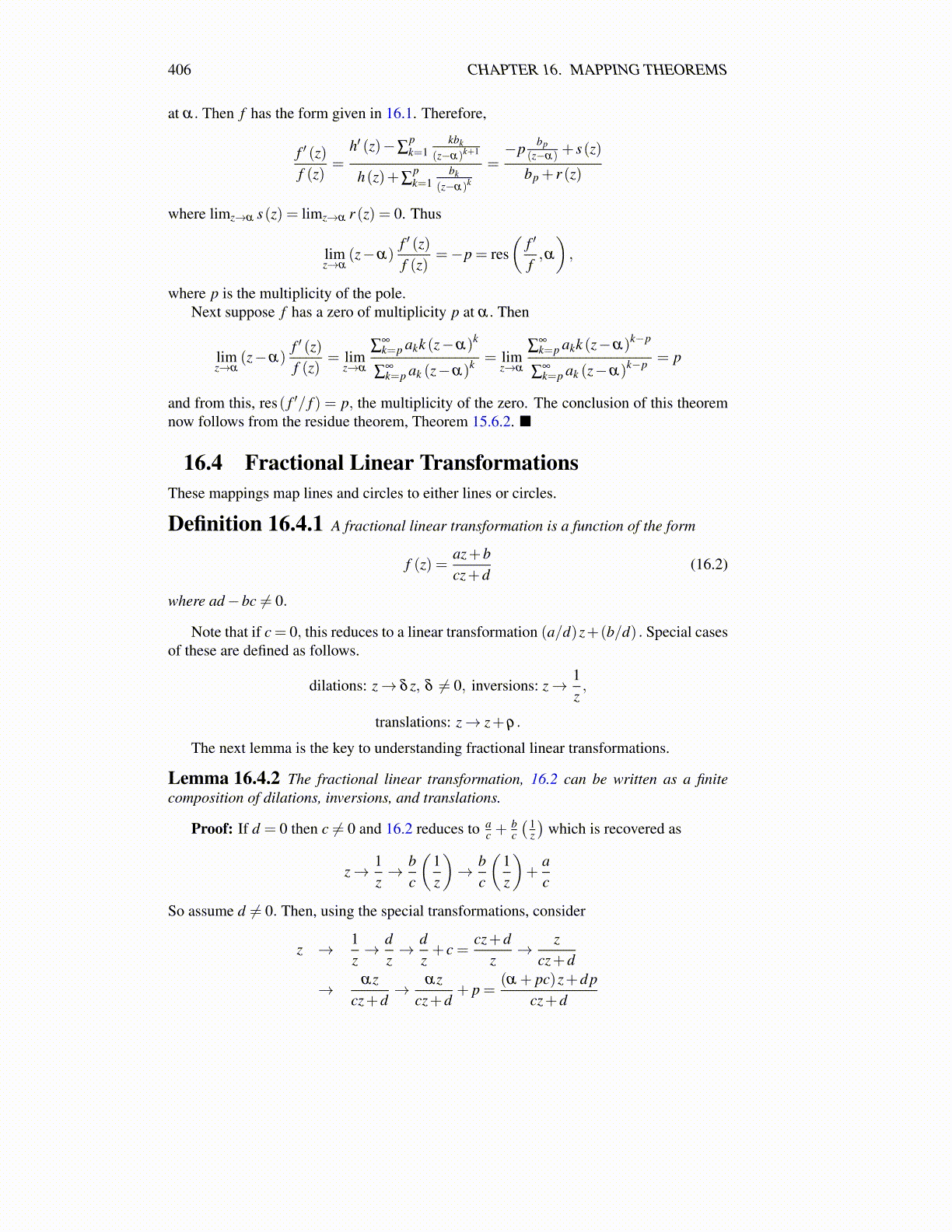
406 CHAPTER 16. MAPPING THEOREMS
at α. Then f has the form given in 16.1. Therefore,
f ′ (z)f (z)
=h′ (z)−∑
pk=1
kbk(z−α)k+1
h(z)+∑pk=1
bk(z−α)k
=−p bp
(z−α) + s(z)
bp + r (z)
where limz→α s(z) = limz→α r (z) = 0. Thus
limz→α
(z−α)f ′ (z)f (z)
=−p = res(
f ′
f,α
),
where p is the multiplicity of the pole.Next suppose f has a zero of multiplicity p at α. Then
limz→α
(z−α)f ′ (z)f (z)
= limz→α
∑∞k=p akk (z−α)k
∑∞k=p ak (z−α)k = lim
z→α
∑∞k=p akk (z−α)k−p
∑∞k=p ak (z−α)k−p = p
and from this, res( f ′/ f ) = p, the multiplicity of the zero. The conclusion of this theoremnow follows from the residue theorem, Theorem 15.6.2. ■
16.4 Fractional Linear TransformationsThese mappings map lines and circles to either lines or circles.
Definition 16.4.1 A fractional linear transformation is a function of the form
f (z) =az+bcz+d
(16.2)
where ad−bc ̸= 0.
Note that if c = 0, this reduces to a linear transformation (a/d)z+(b/d) . Special casesof these are defined as follows.
dilations: z→ δ z, δ ̸= 0, inversions: z→ 1z,
translations: z→ z+ρ.
The next lemma is the key to understanding fractional linear transformations.
Lemma 16.4.2 The fractional linear transformation, 16.2 can be written as a finitecomposition of dilations, inversions, and translations.
Proof: If d = 0 then c ̸= 0 and 16.2 reduces to ac +
bc
( 1z
)which is recovered as
z→ 1z→ b
c
(1z
)→ b
c
(1z
)+
ac
So assume d ̸= 0. Then, using the special transformations, consider
z → 1z→ d
z→ d
z+ c =
cz+dz→ z
cz+d
→ αzcz+d
→ αzcz+d
+ p =(α + pc)z+d p
cz+d